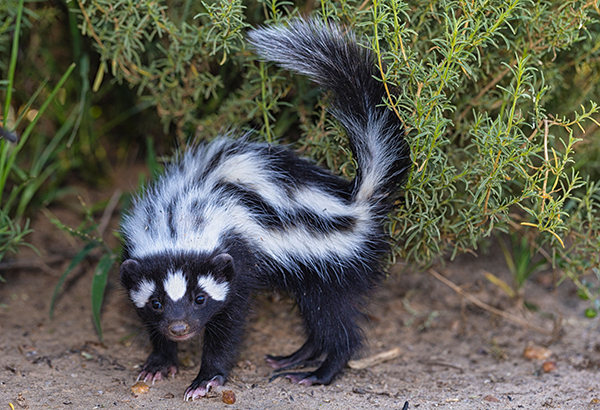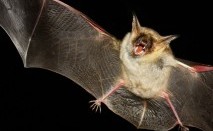
Category: Mammals

For those of you reading this in North America, the zorilla (Ictonyx striatus), or striped polecat, may look like a skunk. But this striped, African weasel is a distinct species. With sharp teth and claws and a small stomach, the zorilla hunts effectively – and often. This predator is a little over 2' long, under 6" tall, and a terror to nearby rodents, snakes, birds, insects, or virtually any creature it can catch and eat. And if the zorilla comes across a larger, more dangerous animal, it has a way of dealing with those threats as well: a powerful anal spray that can cause irritation, burning, even temporary blindness in an opponent. This hungry and not-to-be-trifled with weasel can be found in virtually all dry climates throughout central to southern Africa.
Zorilla Related Links:

The age-defying Brandt’s bat
In most mammals, larger size correlates with longer lifespan, but that is not the case with the Brandt’s bat, who can live up to 41 years and weigh less than 0.28 ounces! These bats resemble larger, longer-lived mammals in that they mature slowly and have fewer offspring – but the size difference is dramatic: a female Bonobo lives for approximately 40 years as well, but she outweighs the Brandt’s bat by a factor of 3,771! Oddly enough, it is suspected that the mutated gene that causes the bat’s dwarfish size is the same one that leads to its long lifespan. Studying animals with unusual longevity like the Brandt’s bat does more than just satisfy our curiosity, it could lead to longer, healthier lifespans for humans and other animals!
Learn more >>
 Discover Animals is a web-based educational resource offered by the NAIA
Discover Animals is a web-based educational resource offered by the NAIA